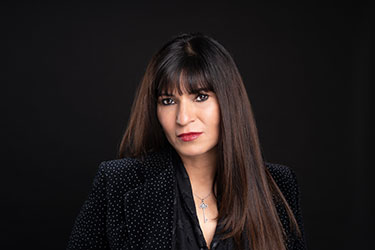As LED lighting adoption grows across all industries, expect it to play a larger role in overall corporate strategy.
By Fariyal Khanbabi, Chief Executive Officer at Dialight
Industrial LED lighting has long been known for its energy efficiency, low maintenance, durability and long-life performance in industrial settings. These proven benefits have driven widespread adoption across all industry sectors, from aerospace and energy to food and beverage and manufacturing.
But as companies look to maximize operational efficiency and sustainability not just as secondary business goals but as mandates for competing in today’s volatile markets, LED lighting is beginning to play a much larger role in overall corporate strategy beyond just illuminating the work area. In an uncertain, post-pandemic world, having the right technology in place can make provide a huge competitive advantage. As we embark on a fresh, and hopefully more optimistic, new year, here’s a look at some of the trends.
Just four years ago, 90% of executives acknowledged that sustainability was important, but only 60% of companies had a strategy in place, and even fewer—just 25%–had established a clear business case for a sustainability strategy. But today, with the increased awareness and media coverage around climate change, those priorities have shifted substantially, and we’ll see more companies optimizing for sustainability due to public pressure and investor expectations. In fact, new data shows that sustainability initiatives can improve financial performance and create a competitive advantage, providing a powerful incentive for greener operations.
For those reasons, investing in LED lighting will be a key driver in achieving those goals across every industrial sector in 2021. Not only do high quality manufactures offer LED technology with a proven superior energy efficiency, greatly reducing a company’s carbon footprint, but they can also create products lasting 10 years or more, eliminating bulb disposal and drastically reducing waste. And, because LED fixtures contain no toxic materials, converting to LED also eliminates hazmat disposal needs for discarded bulbs. In fact, many newer LED fixtures are built with recyclable materials, further reducing landfill waste.

Reliant –The Reliant™ LED High Bay is optimized for high efficiency and smart controls.
Because of the emphasis on sustainability, industrial LED lighting manufacturers will continue to push the envelope on developing technology to maximize energy efficiency. While lumens per watt (LPW) has become the de facto competitive standard over the last few years, with some manufacturers exceeding 200 LPW, that’s certainly not the only criteria for lighting efficiency. In fact, in some cases, pushing high LPW can erode the purported efficiency benefits, contributing to premature fixture failure and other performance issues.
While higher LPW is still a worthy goal, in 2021 we’ll see manufacturers strive for greater efficiency with overall fixture performance in mind. That means advances in component technology that reduce the weak links exposed by driving higher output but also leveraging technology outside the fixture itself as well. For example, demand for automated lighting controls that actually reduce burn time when lights are not needed is growing quickly. After all, a light that’s turned off consumes far less energy (zero, in fact) than the most efficient light on the market. As adoption of IIoT technology grows, so too will the implementation of smart lighting controls to reduce energy demand.
Obviously, safety is always a top concern in industrial settings, but in a post-pandemic world, it has taken on a whole new meaning. Now, instead of just the typical risks, companies must also mitigate the risk of viral transmission among the workforce. That means reconfiguring work areas for physical distancing, while also ensuring ample visibility to simultaneously guard against conventional risks like slip, trip, fall and contact accidents.
LED lighting technology has already proven to dramatically improve visibility, reducing the risk of industrial accidents1. And, by virtue of its bright, white light, it can even improve worker alertness2 and reduce fatigue3 to further prevent the risk of accidents. But, it can also contribute to reducing COVID-related health and safety risks. Advances in optics technology coupled with output improvements will provide more light in the right areas to accommodate physical distancing with fewer fixtures. That means workers can keep a safe distance without being forced into the shadows or requiring the use of inefficient supplemental lighting.
And, as an incentive to adopt technologies that improve workers’ safety, companies can take advantage of CARES Act tax rebates to upgrade work area lighting. In fact, with many facilities operating at lower capacity with fewer workers on site, now may be an ideal time to make LED lighting upgrades as it may have a minimal impact on production.
For years, within most companies, lighting has been viewed as simply a must-have, a necessary “evil” or the cost of doing business. But as priorities shift toward sustainability and worker safety takes on a whole new dimension, companies are recognizing the powerful role that modern, innovative lighting can play in achieving overall strategic objectives. In 2021, the secret to maximizing efficiency, safety and competitive advantage may be as simple as looking up.

Fariyal Khanbabi
Fariyal Khanbabi is Dialight Group CEO & Chairman of Dialight Foundation. She is also the 2020 winner of Silver Stevie® Award in the Woman of the Year – Manufacturing category. In the past, she occupied the position of Chief Financial Officer for Blue Ocean Group Ltd. and Chief Financial Officer at Britannia Bulk Holdings, Inc. and Chief Financial Officer at Britannia Bulk Plc (a subsidiary of Britannia Bulk Holdings, Inc.). Fariyal Khanbabi received an undergraduate degree from the University of Leeds.
1 Abdou, “Effects of Luminous Environment on Worker Productivity in Building Spaces”
2 Falchi, “Limiting the impact of light pollution on human health, environment and stellar visibility”
3 ANSI/API RP 755: Fatigue Risk Management System
Scott Ellyson, CEO of East West Manufacturing, brings decades of global manufacturing and supply chain leadership to the conversation. In this episode, he shares practical insights on scaling operations, navigating complexity, and building resilient manufacturing networks in an increasingly connected world.